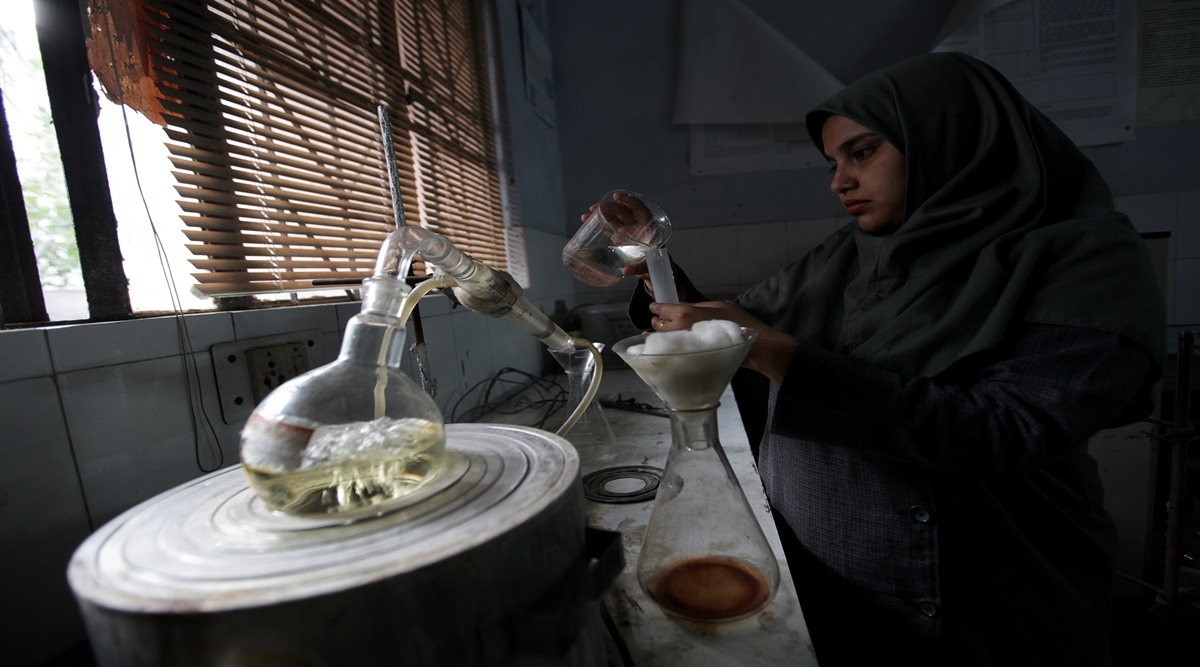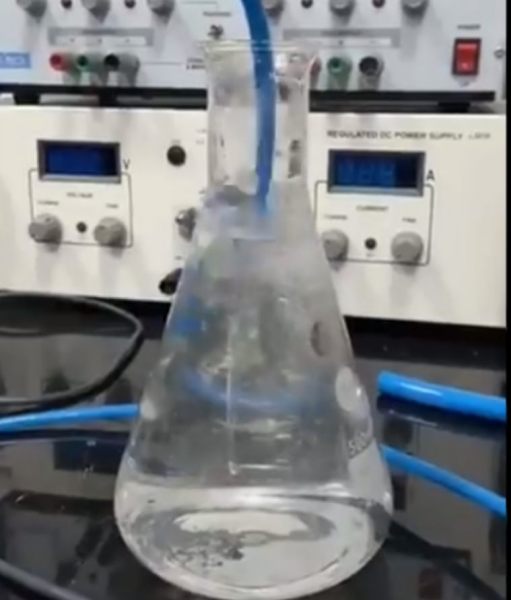 The researchers started off working with sodium percarbonate, a laundry chemical, commonly used in soaps, which is a mixture of sodium carbonate and hydrogen peroxide. The chemical reaction resultant of mixing hydrogen peroxide and potassium permanganate gave oxygen, manganese-di-oxide, water and potassium hydroxide.
(Representational)
The researchers started off working with sodium percarbonate, a laundry chemical, commonly used in soaps, which is a mixture of sodium carbonate and hydrogen peroxide. The chemical reaction resultant of mixing hydrogen peroxide and potassium permanganate gave oxygen, manganese-di-oxide, water and potassium hydroxide.
(Representational) The mounting Covid-19 cases in India with scores of patients gasping for oxygen instantly put this trio at the Indian Institute of Science Education and Research (IISER), Pune, in a thinking and experimenting mode.
Within 40 hours of performing laboratory experiments, researchers Srinivas Hotha, Umakant Rapol and Sunil Nair have a proof of concept for a portable oxygen-generating equipment ready. They say this model can best be pressed-in as an emergency supplement to patients in hospitals, ambulances or even at homes, where oxygen is running out of supply.
The scientists chose easily available chemicals for this experiment capable of generating oxygen suiting hospital requirements treating Covid-19 patients.
 The scientists have successfully generated oxygen in the laboratory setup (Express Photo)
The scientists have successfully generated oxygen in the laboratory setup (Express Photo)
The researchers started off working with sodium percarbonate, a laundry chemical, commonly used in soaps, which is a mixture of sodium carbonate and hydrogen peroxide. The chemical reaction resultant of mixing hydrogen peroxide and potassium permanganate gave oxygen, manganese-di-oxide, water and potassium hydroxide.
“We wanted to make portable and affordable oxygen, using readily available chemicals. The idea is to supply the chemical in the form of a powder in disposable bags. This powder, when chemically activated, can generate oxygen within 10 to 15 minutes after initiation of the process,” said Hotha, a professor from the chemistry department at the institute.
Such an arrangement can be used to support patients in case of emergency, especially during the intervening time when the current oxygen supply is getting replenished, he added.
One of the commonest ways of generating oxygen across the world is treating compressed air from the atmosphere with zeolites. These separate oxygen from nitrogen and other gaseous matter. Zeolite is a rock, which is porous and crystalline in nature and contains aluminosilicates.
The problem, which now remains to be addressed, is the high amount of heat generated as a result of this chemical reaction along with foam, the researchers shared.
“Ours is a chemical approach, wherein there is neither electricity nor zeolites required. This addresses the main problem as zeolites are generally imported,” said Rapol, a professor at the institute’s physics department.
Even though it is still in the experimental phase, the IISER trio is hopeful of getting a workable model soon. They are also in preliminary talks with multiple industries that have shown keen interest to develop and scale-up this work.
In similar efforts last year, Rapol and Nair were part of a small group at IISER, Pune, involved in developing a ventilator, which was completed in a record time.
- The Indian Express website has been rated GREEN for its credibility and trustworthiness by Newsguard, a global service that rates news sources for their journalistic standards.

